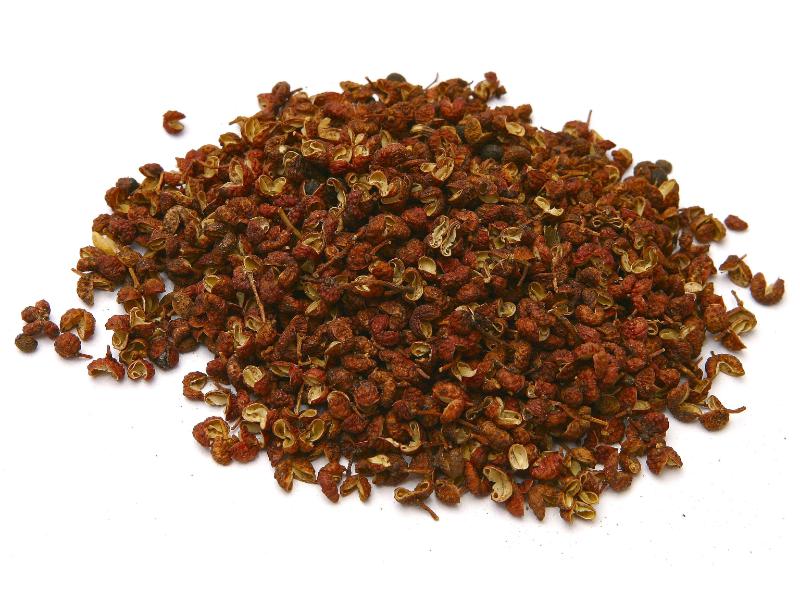Search in medicinals
Zanthoxyli Pericarpium
Zanthoxylum [husk]
花椒 〔花椒〕 huā jiāo

Alternate English names: Sìchuān peppercorn
Alternate Chinese names: 蜀椒 shǔ jiāo; 大椒 dà jiāo; 巴椒 bā jiāo; 南椒 nán jiāo; 汗椒 hàn jiāo; 点椒 diǎn jiāo; 川椒 chuān jiāo; 川花椒 chuān huā jiāo; 大红袍 dà hóng páo; 椒红 jiāo hóng
Kingdom: Plant
Origin in PRC Pharmacopoeia: Zanthoxylum bungeanum Maxim.; Zanthoxylum schinifolium Sieb. et Zucc. (PRC Pharmacopoeia)
Origin in unofficial sources: Zanthoxylum bungeanum Maxim.; Zanthoxylum schinifolium Sieb. et Zucc.
Use: Medicinal and alimentary
Category: Interior-warming agents
Properties: Acrid; warm.
Channel entry: Spleen, stomach, and kidney channels.
Actions and indications:
- Warms the center and relieves pain: Center cold with abdominal pain, cold-damp with
vomiting and diarrhea . - Expels worms: Abdominal pain from worm accumulation.
- Relieves itching: Eczema, itching, and
genital itch .
Dosage and method: Oral: 2–6g in decoctions; also used externally.
Warnings: Contraindicated in yīn vacuity with effulgent fire; to be used with care in pregnancy.
Product description: This fruit is a spherical, 3.5–4 mm in diameter. The pericarp is split open on the ventral side into two hemispherical portions, which remain joined at the base. The seeds are often missing. The exterior surface is a rusty red in color, and rough and warty in texture. At the tip are the remains of the stigma, and at the base is a small fruit stalk, and 1–2 undeveloped carpels.
Quality: Clean uniform lustrous bright-red thin-skinned fruits are the best.
Production area: Sìchuān, Liáoníng, Shānxī.
Etymology: The name huā jiāo 花椒, literally flower pepper,
doubtlessly describes the petal-like formation of the opened pericarp.
See: Jiāo mù (椒目 Zanthoxyli Semen, zanthoxylum seed)
Back to search result Previous Next